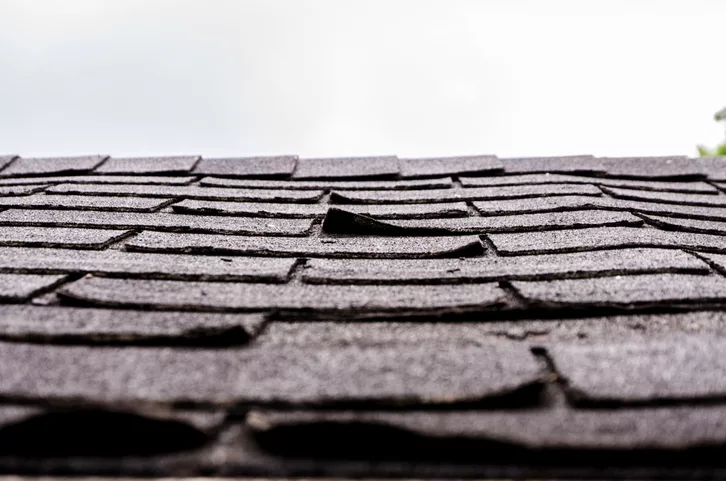Shingle roofs are one of the most popular roofing choices for homes across the United States, including the state of Texas. They offer a blend of affordability, durability, and aesthetics that make them a preferred option for many homeowners. In this guide, we will delve into the world of shingle roofs, exploring their benefits, drawbacks, routine maintenance needs, average costs, lifespan, and addressing common questions about shingle roofing, particularly in the context of Texas.
Introduction to Shingle Roofs
Shingle roofs are roofing systems composed of individual overlapping elements known as shingles. These shingles are typically flat, rectangular pieces made of various materials, including asphalt, wood, metal, slate, and composite materials. Asphalt shingles are the most common due to their cost-effectiveness and ease of installation.
Benefits of Shingle Roofs
1. Affordability:
Shingle roofs are generally more affordable than other roofing options, making them an attractive choice for budget-conscious homeowners. The cost of materials and installation is comparatively lower, making shingle roofs accessible to a broader range of homeowners.
2. Versatility in Design:
Shingles come in a wide array of colors, styles, and textures, allowing homeowners to choose a design that complements their home's aesthetics. Whether you desire a traditional look or a more modern appearance, there's a shingle option to suit your preferences.
3. Ease of Installation and Repair:
Shingle roofs are relatively easy to install compared to other roofing materials. This simplicity extends to repairs as well. Individual damaged shingles can be replaced without having to redo the entire roof, saving both time and money.
4. Weather Resistance:
Modern asphalt shingles are designed to withstand various weather conditions, including strong winds, rain, hail, and even fire. They offer excellent protection for homes against the unpredictable Texas weather.
5. Energy Efficiency:
Certain types of shingles come with reflective properties, helping to reduce heat absorption and keep your home cooler during the scorching Texas summers. This can lead to energy savings and a more comfortable indoor environment.
Drawbacks of Shingle Roofs
1. Lifespan:
Shingle roofs generally have a shorter lifespan compared to materials like metal or slate. Depending on the quality and type of shingles used, you can expect an average lifespan of 20 to 30 years. In Texas, the intense heat and occasional severe weather can contribute to slightly shorter lifespans.
2. Maintenance:

Shingle roofs require regular maintenance to ensure their longevity. This includes conducting a thorough roof inspection for damaged or missing shingles, cleaning debris, and addressing any issues promptly. Neglecting maintenance can lead to more significant problems and reduce the roof's lifespan.
3. Environmental Impact:
Asphalt shingles, a common shingle type, have an environmental impact due to the petroleum-based materials used in their production. Although efforts are being made to recycle old shingles, disposal can still contribute to landfill waste.
4. Sensitivity to Temperature Changes:
Shingle roofs can contract and expand with temperature fluctuations. In Texas, where temperatures can vary drastically, this constant movement can lead to the shingles cracking or warping over time. Additionally, strong winds can cause shingles to come loose, allowing rain, dirt, or debris to get under shingles, potentially leading to damage of the roof as well as inside the home.
Routine Maintenance for Shingle Roofs
1. Regular Inspection:
Conduct a visual inspection of your roof at least twice a year, preferably in the spring and fall. Look for missing, damaged, or curling shingles, as well as any signs of leaks or water damage.
2. Clean Gutters and Downspouts:
Ensure that gutters and downspouts are free from debris to allow proper drainage. Clogged gutters can lead to water accumulation on the roof, potentially causing damage.
3. Trim Overhanging Branches:
Trim branches that overhang your roof to prevent them from scraping against the shingles during windy conditions. This will help avoid shingle damage.
4. Prompt Repairs:
Address any issues or damages promptly. Replace missing or damaged shingles and fix leaks immediately to prevent further damage to the roof structure.
5. Professional Inspection:
Consider hiring a professional roofing contractor for a comprehensive roof inspection every few years. They can identify potential issues that may not be visible to an untrained eye.
Average Cost of a New Shingle Roof in Texas
The cost of installing a new shingle roof can vary depending on several factors, including the size and location of your home, the type and quality of shingles, the complexity of the roof's design, and the contractor's labor costs. On average, in Texas, you can expect to pay between $5 to $10 per square foot for a basic asphalt shingle roof installation. This translates to roughly $10,000 to $20,000 for a 2,000 square foot roof.
Average Lifespan of Shingle Roofs in Texas
In Texas, the average lifespan of a shingle roof typically ranges from 20 to 25 years. However, this can vary based on several factors, including the quality of the shingles, the local climate, the level of maintenance, and any extreme weather events the roof may endure.
Common Questions About Shingle Roofs
Can I Install Shingles Myself?
While it's possible for a skilled DIY enthusiast to install shingles, it's usually recommended to hire a professional roofing contractor. Roofing requires precise techniques and safety measures to ensure a watertight and secure installation.
How Can I Extend the Lifespan of My Shingle Roof?
Regular maintenance, prompt repairs, and proper ventilation in the attic can significantly extend the lifespan of your shingle roof. Ensuring that your roof has adequate ventilation helps prevent excessive heat buildup that can deteriorate shingles prematurely.
Are There Eco-Friendly Shingle Options?
Yes, there are eco-friendly shingle options made from recycled materials or designed for energy efficiency. Look for shingles with certifications like ENERGY STAR® that indicate they meet certain environmental performance standards.
Can Shingle Roofs Withstand Hailstorms?
While no roof is completely hail-proof, many asphalt shingles are designed to withstand moderate hailstorms. Impact-resistant shingles can offer better protection against hail damage, but also come at a higher price.
Do Shingle Roofs Require Special Ventilation in Texas?
Yes, proper attic ventilation is essential in Texas to expel heat and moisture. This helps in maintaining the shingles' integrity and prolonging their lifespan, especially in the face of the state's hot and humid climate.
In conclusion, shingle roofs are a popular and cost-effective choice for homeowners in Texas, providing a blend of affordability, design versatility, and weather resistance. Routine maintenance and timely repairs are crucial to maximize their lifespan and protect your investment. Consider consulting with a reputable roofing professional to assess your specific needs and choose the right shingle roofing option for your home in the Lone Star State.
If you're looking for a shingle roof repair or install near San Antonio, Austin, Dallas, or Fort Worth areas, we'd be happy to discuss how we can help you with your roofing needs.
